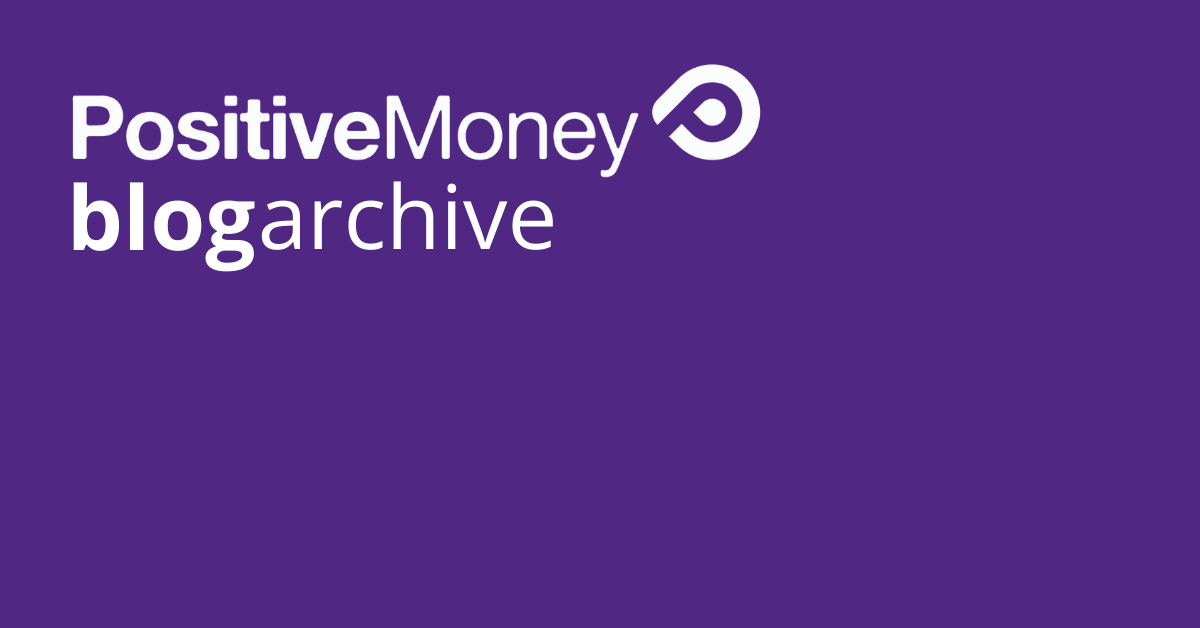Banks are lending to buy houses, not build businesses

The days of the credit crunch can seem to be well and truly behind us. 2016 was the second successive year when bank lending to the economy was in positive territory – that is the total loans issued were greater than repayments. In total bank (net) lending in 2016 was £79bn, up from £39bn in 2015.
But there are clear signs that the banking system still isn’t working as effectively as it should to support the real economy:
the scale of lending is still low
the largest area of lending is to mortgages
lending to firms remains incredibly weak, even if it was positive this year
manufacturers barely get a look in, with lending to agriculture higher in seven out of the last eight years
In the meantime, firms are increasingly relying on other sources of corporate financing. These facts don’t bode well for the British economy. And they aren’t good for workers in retail banking either, with serious worries that the UK retail banking sector is being run down.
Total bank lending
The latest figures show that overall lending was positive across the board. Financial corporations, households and businesses (chart below) all saw increases in the amount lent by banks.
But as the chart below sets out, lending is still weak compared to the pre- crisis period. And businesses (the green bar in the chart) are faring worst, with lending increasing by just £15bn over the last year.
Bank lending to all sectors, annual change £ billion
[NB these figures are derived from Bank of England lending statistics, based on the structure of the industry breakdown in Table F from the very helpful Money and Credit release, with fuller data in ‘Bankstats’ Table C1.2 and using the interactive database. Bank (strictly bank and building society) lending corresponds to new (net) lending over the year, rather than the stock of outstanding lending. The annual totals here are derived by summing quarterly change, which is the recommended approach for calculating annual changes – see BoE methodological note.]
Lending to households
The main area where lending is growing is still lending secured on dwellings – that is, mortgages. In fact this has been the only consistently positive category throughout the post-crisis period.
The scale of reliance on mortgage lending is significantly larger than ahead of the crisis – in 2016 mortgage lending accounted for 51% of all lending, almost double the share ahead of the crisis (27% over 1998-2007).
Consumer credit is also gradually creeping larger– the cash increase of £10.0bn for 2016 is the largest since £11.2bn in 2005. But this is still a way below the heady £16bn annual average over 2000-2004.
(Throughout this discussion there is a tension between inadequate lending and wider concerns about excess debt – this is addressed in the last section.)
Lending to business
The significant fall in lending to non-financial businesses must still be the biggest worry. The next chart looks at lending to non-financial business by industry. Again industry lending is positive across the board for the first time in eight years, though there is still a marginally negative figure for manufacturing (-£68million) – which is seemingly still a no-go area for lending. The largest category of industry lending is business services, accounting for nearly half of the total. Lending on real estate was also in positive territory for the first time since before the crisis (when it was the counterpart to excess in commercial property).
Bank lending to non-financial businesses, annual change, £ billion
Relative to the size of the industry, lending to agriculture has been particularly robust in recent years (though perhaps this is more about real estate than farming activity). In fact lending to agriculture has been higher than lending to manufacturing in seven out of the last eight years. To give an idea of why we might think that’s strange, note that while 387K people have jobs in agriculture, 2.6M work in manufacturing.
Lending to agriculture v manufacturing, £millions
Discussion: bank and other lending
At one level it seems contradictory to worry that there is too much private debt (see e.g. here) but not enough bank lending. But the hope must be that sensible lending should boost corporate income down the line and so lending as a share of income would remain under control. Either way the present skew to lending secured on property seems particularly unbalanced – and for too many years, the only game in town. No matter what happened this year, corporate lending is in the serious doldrums.
Up to a point firms are borrowing from other sources, notably capital markets – the Bank of England figures are summarised on the chart below. As widely understood, corporate bonds (yellow) are taking up the vast majority of the slack, and are vastly more important to total corporate borrowing than ever before. There is also the possibility that firms are resorting to ‘shadow banking’ – i.e. other sources of lending outside the formal/traditional banking sector – which is less regulated and perhaps more unstable and potentially not well accounted for in the Bank of England figures.
Net finance raised by non-financial companies, £ billions
In the meantime on the high street banks are being shut and jobs are being lost. Yet retail banks have been the foundation of a viable financial system for centuries. It seems doubtful that this is a sound place to be.
This article appeared originally on the ToUChstone blog.[sws_blue_box box_size=”630″]These are the personal views of the author, they don’t necessarily reflect the views of Positive Money; they are intended to stir up the debate. While the article is on Positive Money website, it does not suggest that the author is in favour of Positive Money’s reforms. [/sws_blue_box]